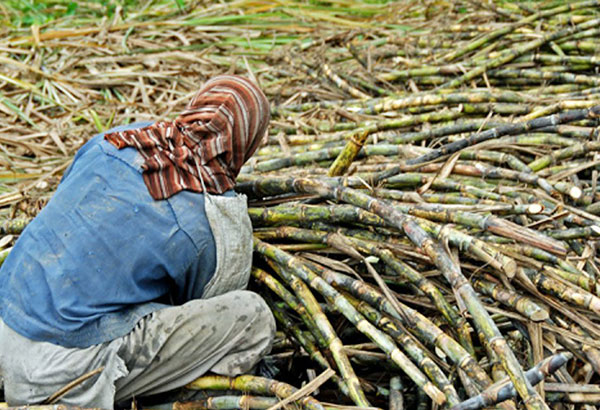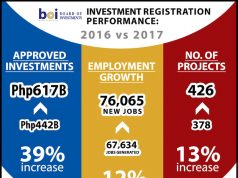MANILA – The Philippine Board of Investments (BOI) recently approved the P490 million sugar mill plant of HDJ Bayawan Agri-venture Corp. (HBAC), which qualified in the 2017 Investment Priorities Plan (IPP) under the manufacturing activities agro-processing category.
The sugar mill plant is located on a five-hectare area in Barangay Bugay, Bayawan City, Negros Oriental. It is scheduled to produce 427,050 50-kilogram bags (LKG) of raw sugar annually and 7,665 metric tons per year (MTPY) of molasses (its by-product). With 151 personnel, the plant has started operating commercially this month.
Trade Undersecretary for Industry Development and BOI Managing Head Ceferino Rodolfo said the new plant, being first in many years will address the needs of Department of Agrarian Reform (DAR) beneficiaries and other small sugarcane farmers located within the 15-kilometer radius of the plant.
“The establishment of the new sugar mill plant will dramatically reduce the cost of transporting sugarcane among farmers within the area by as much as P600 per ton. Farmers will now have greater flexibility on where to send their sugarcanes for milling,” Undersecretary Rodolfo said.
Before this project, the nearest existing sugar mill sites were in Sta. Catalina, Bai City and Kabankalan City which are 50 kilometers away; and the cost of transporting sugarcane to these sites is around P650 per ton.
Sugar is the generic name for sweet, soluble carbohydrates, many of which are used in food. There are various types of sugar derived from different sources. Simple sugars are called monosaccharides and include glucose (also known as dextrose), fructose, and galactose. The most widely used sugar which is used in a wide variety of foods is sucrose, commonly known as “table sugar” or “granulated sugar.”
To make molasses, sugar cane is harvested and stripped of leaves. Its juice is extracted, usually by cutting, crushing, or mashing. The juice is then boiled to concentrate it, promoting sugar crystallization. The result of this first boiling is called syrup and has the highest sugar content. Molasses is created from a second boiling and sugar extraction and has a slightly bitter taste. Sugar by-products such as molasses are commonly used to make rum and are also used to make ethanol for fuel.
National production of sugarcane for July-September 2017 increased by 63.5 percent to 783,370 MT compared to 479,000 MT in the same period last year, according to figures from the Sugar Regulatory Administration and Philippine Statistics Authority. Western Visayas which includes Negros Oriental and Occidental produced over half of the national output with 54.4 percent.
Overall, the country’s sugar output has reached 2.5 million metric tons (MMT) as of August 2017, surpassing the production target for the current crop year 2016-2017. It is already the highest recorded figure in 40 years (since 1976-1977).
SRA data showed that the total sugarcane areas reached 419,207 hectares, higher than the 411,502 hectares in the previous crop year. The sugar industry has around 700,000 workers in 19 sugar-producing provinces in the country, according to the Department of Labor and Employment.










